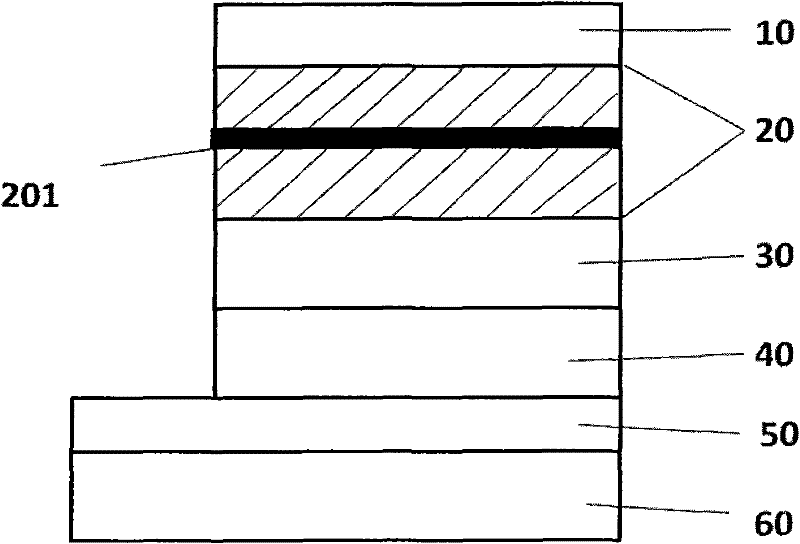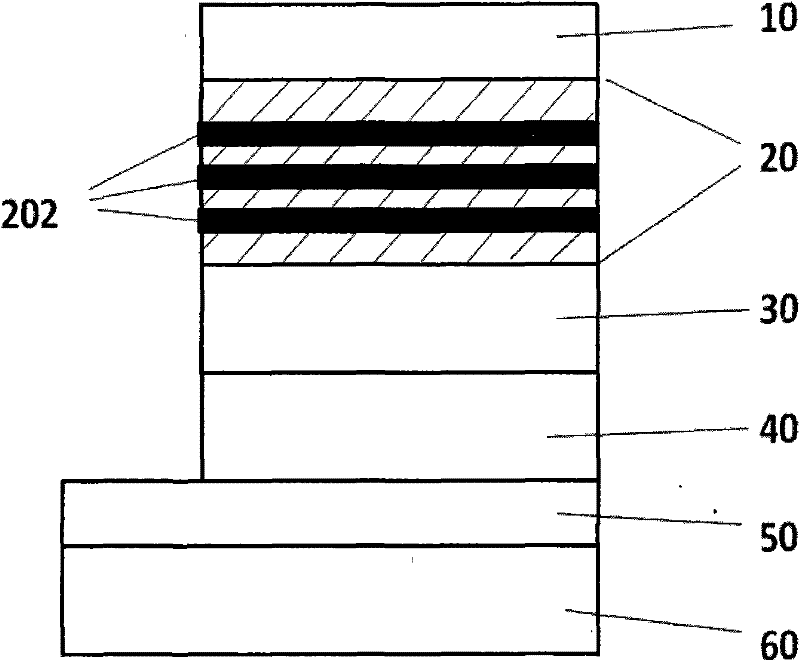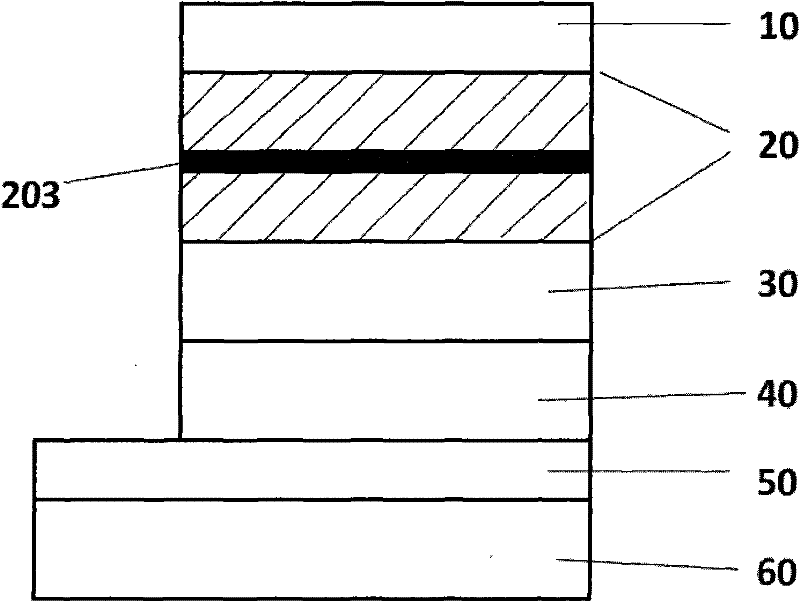Organic photolectronic device with an updoped gain layer and preparation method thereof
An optoelectronic device, non-doped technology, applied in the direction of electrical solid device, semiconductor/solid state device manufacturing, electrical components, etc., can solve problems affecting device performance, reduce device manufacturing cost, and achieve complex implementation, and achieves low manufacturing process requirements. The effect of improving luminous efficiency and simple device structure
- Summary
- Abstract
- Description
- Claims
- Application Information
AI Technical Summary
Problems solved by technology
Method used
Image
Examples
Embodiment 1
[0097] Such as image 3 As shown, the electron transport layer 20 in the structure of the organic electroluminescent device has a non-doped single-layer metal thin layer 203 .
[0098] The organic electron transport material and luminescent material of the device are Alq 3 , the hole transport material is NPB, the material of the non-doped single-layer metal thin layer 203 is Mg, the cathode layer is Mg:Ag alloy, and the whole device structure A is described as:
[0099] Glass substrate / ITO / NPB(20nm) / Alq 3 (50nm) / Mg(2nm) / Alq 3 (20nm) / Mg:Ag(100nm)
[0100] The preparation method is as follows:
[0101] ①Use acetone solution, deionized water and ethanol solution to ultrasonically clean the conductive substrate ITO glass, and dry it with dry nitrogen after cleaning. Wherein the ITO film on the glass substrate is used as the anode layer of the device, the square resistance of the ITO film is 12Ω / sq, and the film thickness is 180nm.
[0102] ② Move the dried substrate into a ...
Embodiment 2
[0115] Such as Image 6 As shown, the electron transport region 20 in the structure of the organic solar cell device has a non-doped single-layer metal thin layer 204 .
[0116] The organic electron acceptor material of the device is C 60 , the electron donor material is CuPc, the material of the non-doped single-layer metal thin layer 204 is Mg, the metal electrode layer is metal Ag, and the whole device structure is described as:
[0117] Glass substrate / ITO / CuPc(40nm) / C 60 (30nm) / Mg(2nm) / C 60 (10nm) / Ag(100nm)
[0118] The fabrication process of the device is similar to that of Example 1.
Embodiment 3
[0120] Such as Figure 7As shown, in the structure of the organic solar cell device, there is a non-doped single-layer metal thin layer 205 in the exciton blocking layer and buffer layer 70 .
[0121] The organic electron acceptor material of the device is C 60 , the electron donor material is CuPc, the exciton blocking layer and buffer layer material is BCP, the material of the non-doped single-layer metal thin layer 205 is Mg, and the cathode layer uses metal Mg. The entire device structure is described as:
[0122] Glass substrate / ITO / CuPc(40nm) / C 60 (40nm) / BCP(20nm) / Mg(2nm) / BCP(10nm) / Ag(100nm)
[0123] The fabrication process of the device is similar to that of Example 1.
PUM
 Login to View More
Login to View More Abstract
Description
Claims
Application Information
 Login to View More
Login to View More - R&D
- Intellectual Property
- Life Sciences
- Materials
- Tech Scout
- Unparalleled Data Quality
- Higher Quality Content
- 60% Fewer Hallucinations
Browse by: Latest US Patents, China's latest patents, Technical Efficacy Thesaurus, Application Domain, Technology Topic, Popular Technical Reports.
© 2025 PatSnap. All rights reserved.Legal|Privacy policy|Modern Slavery Act Transparency Statement|Sitemap|About US| Contact US: help@patsnap.com



